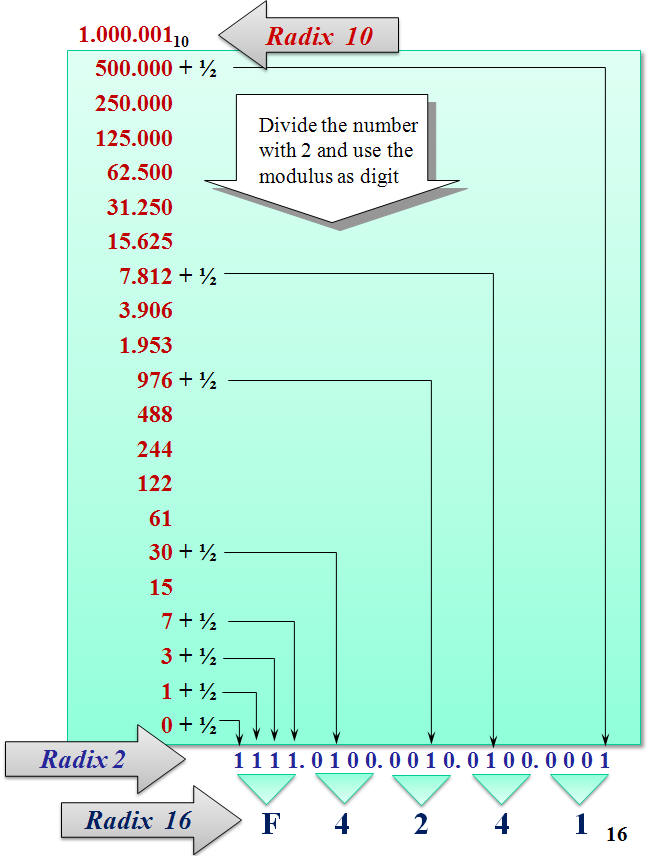|
|
| |
|
Last updated:
13-07-09 |
Our natural number system based @
10 while computers bound to use 2 as base for their
calculations. A common task for a computer program will include
conversions between decimal inputs and the binary format.
Most conversions algorithm based
at division / modulus operations - but a "slightly modified"
shift-register could be very useful for binary to BCD and BCD to
binary conversions. (Read
more here)
|
|
|
| |
|
|
Decimal |
Binary |
Hexadecimal |
|
0 |
0 0 0 0 |
0 |
|
1 |
0 0 0 1 |
1 |
|
2 |
0 0 1 0 |
2 |
|
3 |
0 0 1 1 |
3 |
|
4 |
0 1 0 0 |
4 |
|
5 |
0 1 0 1 |
5 |
|
6 |
0 1 1 0 |
6 |
|
7 |
0 1 1 1 |
7 |
|
8 |
1 0 0 0 |
8 |
|
9 |
1 0 0 1 |
9 |
| 10 |
1 0 1 0 |
A |
| 11 |
1 0 1 1 |
B |
| 12 |
1 1 0 0 |
C |
| 13 |
1 1 0 1 |
D |
| 14 |
1 1 1 0 |
E |
| 15 |
1 1 1 1 |
F |
|
 |
|
Conversions
between binary and hexadecimal number systems easy - just group
the binary digits in groups of four.
The same is true for binary and
octal (radix 8) numbers - just group 3-bits together.
|
|
|
Conversions
between decimal and octal number systems possible - divide the
decimal number with 8 until the number = 0
|
|
|
Conversions
between the octal number system and "our decimal system" done by
multiplying each octal digit with the powers of 8n
|
|
|
|
|
|
|
|
|
|
|
|
|
|
|
|
|
|
|
|
|
|
|
|
 |
